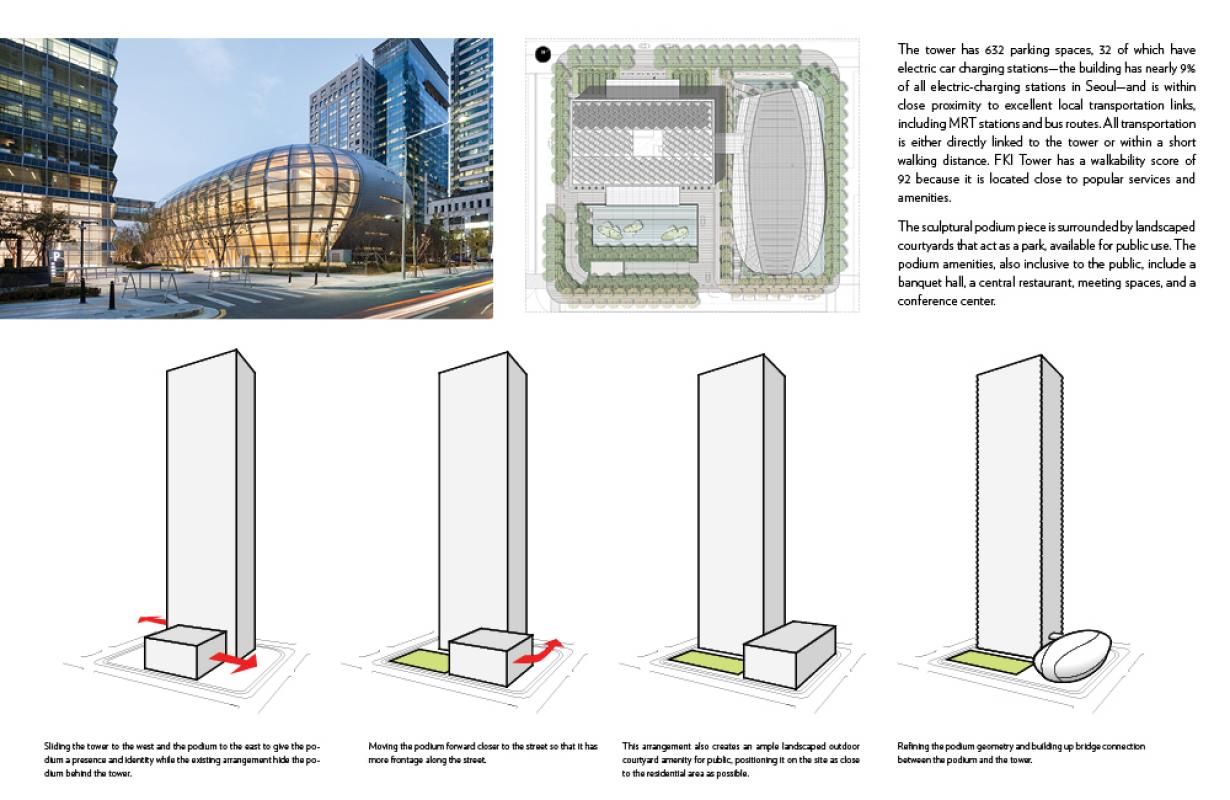FKI Tower
The 116,000 sm, 50-story, 240-meter FKI Tower is an important new addition to the skyline of Seoul, Korea. The Federation of Korean Industries (FKI) represents major companies like Samsung, LG, and Hyundai Motors. The new headquarters, located on Yeoi- Dae-Roh, the main through-road in Seoul, is now a prominent fixture among the marquee buildings along the road. The tower’s position guarantees spectacular views on all sides, adding to the world-class setting similar to New York’s Central Park or Chicago’s Magnificent Mile. The concept for FKI Tower was developed by combining the client’s request for a building that was contextual to the predominantly orthogonal architecture of the Yeoido District with the city’s requirement that all new large-scale commercial buildings generate a minimum of 5% of their energy onsite. The design team developed a strategy that met both requirements with an exterior-wall photovoltaic system that combines maximum access to views with energy-efficiency strategies and energy generation technologies, while reducing the amount of energy that the building uses for its heating and cooling loads. The tower’s interior includes several indoor garden and atrium spaces that enhance the workplace environment with natural elements of wood, bamboo and other native plants.
![[Adrian Smith + Gordon Gill Architecture - FKI Tower - COVER IMG]](https://architectureprizecom.s3-us-west-2.amazonaws.com/uploads/88800/large_1505943469.jpg)



